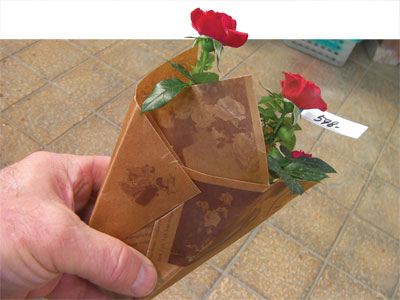
“Do they have garden centres in Japan?” That was a comment a garden
centre owner made to me during a meeting when I mentioned I had been
invited to Japan to work with the industry.
“Do they have garden centres in Japan?” That was a comment a garden centre owner made to me during a meeting when I mentioned I had been invited to Japan to work with the industry.
 |
|
| Consumers are looking for small living gifts that are thoughtful but don’t require a lot of space. Advertisement
|
With a population of 127 million people and 70 per cent of the wealth concentrated around Tokyo and Osaka, where residents spend an average of 18,000 yen per head on plant products each year, the Japanese nursery industry is large and substantial. There are 25,000 garden and florist outlets supplied by 2,400 wholesale nurseries across the country.
Yes, the industry has declined by 25 per cent over the last five years, but that has mainly been due to the lack of restructuring of the industry rather than the faltering, flat economy.
Many in the industry have relied on an ancient system of distribution: the auction. There are over 700 plant auctions in Japan and they hold auctions three times per week. In an industry where the stock turn varies between one and six turns each year, this seems to be an expensive distribution system that is hampered even more by many buyers who do not know their product and therefore buy on pot size and go for the cheapest prices.
This is sad when you consider that Japanese growers are some of the most passionate I have met. Japanese consumers also have a real passion for plants.
A typical, well-run garden centre generates 84,000 yen per square metre per year from its plant area. The average sale totals 2,000 yen per customer per visit.
Companies such as Joyful Honda, with 16 stores, have some of the largest garden centres you will see in the world, while companies such as Protoleaf are some of the best boutique garden centres I have ever seen anywhere.
The Japanese market
Japanese retailing is about plants that are looking their best at point of purchase. One reason for this is that this is an urban society with some of the most expensive accommodation in the world. This means that outdoor gardens often do not exist and therefore container gardening is huge. It also means that any plant can become a container plant.
Cyclamen can be placed next to camellias and tropical foliage to create the right effect in a container.
Plant areas are full of colour. I was visiting plant centres in February that were full of colour. When your market is a container market, the winter has less effect on stock turn and cash flow. The container and the plant are critical. Get that right and sales are guaranteed.
Lessons from Japan
Apart from working with the garden centres and nurseries in Japan to improve their marketing, my trip was also an opportunity to look at new ideas that could be introduced in other countries.
Here are some useful tips I picked up while in Japan:
Small plant containers are beautiful and profitable. Small containers, plants that can be given as gifts and ornaments should make up a large proportion of the product mix. Consumers are looking for small living gifts. In packaging the gift, the container is equal to the plant. The detail required in selecting the right container is important.
Colour themed indoor living is on trend. Many retailers tell me that indoor living is only a small part of their retail mix at present. When you look at their merchandising strategy in this area, you can often understand why. The leaders in Japan are aware that the category is made up of living furniture, seasonal gifts, orchids, passion red, celebrations, pure white, pastel pink, sunny yellow and miniature gardens. They display the categories accordingly and the space allocation for colour categories changes depending on the season.
Miniature gardens are a growth category. I am seeing growth in this category in the United States with fairy gardening, and the same is true in Europe. The Japanese are ahead of the rest of the world in developing the miniature garden category. One reason for this is that the category’s growth started in China and is spreading around Asia before hitting other regions of the world.
The biggest lesson: be flexible. Do not be a horticultural purist. Indoor plants can be mixed with outdoor plants to get the right effect for the consumer. Outdoor plants in flower can be used as indoor plants. Merge the indoor and outdoor departments and let yourself become a lot more creative.
A cautionary note: you get what you pay for. The Japanese market still relies on the auction system. This has stifled plant marketing. Although the growers are passionate, many auction buyers do not know their plants and so make purchases based on pot size. This has the effect of turning plants into commodity products that are often offered to the consumer too cheaply. As a result, they are losing their gift appeal and sales are down. The lesson here? The cheapest product is not always the best.
John Stanley is a conference speaker and consultant with clients in over 33 countries.
Print this page